The 'Sioux' in Canada - in photographs, circa 1870 – 1915 – Part 3Sitting Bull's Lakota
Despite the fact there were two photographers floating around during the period the Lakota were living in Canada after Little Bighorn (see
amertribes.proboards.com/thread/3463/george-anderton-hook ), there aren't many verified photographs of them.

This is definitely Long Dog, a member of Crow King's Hunkpapa, with George Wells/Wills of B Troop of the NWMP. I've seen this credited to W.J. Oliver, who had a studio in Calgary during the 1880s, but this was taken by either George Anderton or W.E. Hook at Fort Walsh, possibly as early as late 1876 when the first Lakota crossed the border after Little Bighorn, possibly to check the lay of the land.
era.library.ualberta.ca/items/eb967b32-0a53-4df4-9f30-0e399ea48dc3/view/5b59aa78-da3d-4bc0-ad5a-589aa544a24e/Caverhill_Heather_M_201409_MA..pdf
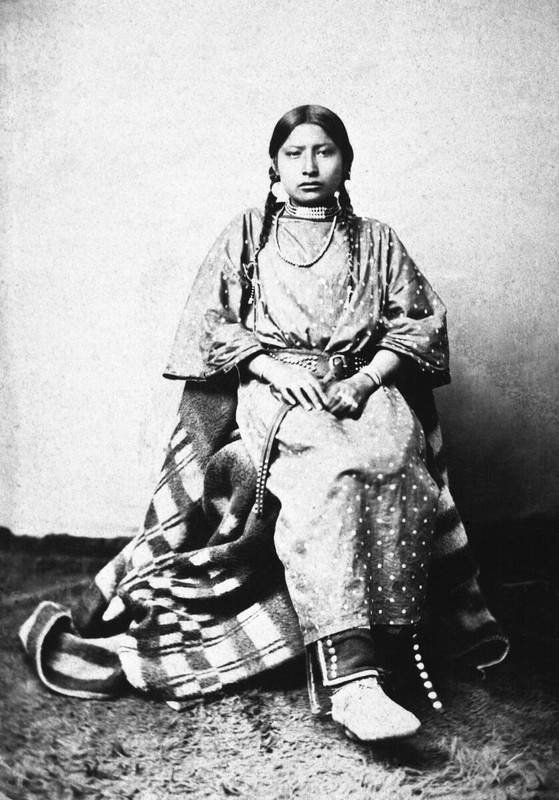
Tahnoncoach, 'Sioux' wife of George Pembridge of the NWMP and allegedly the niece of Sitting Bull
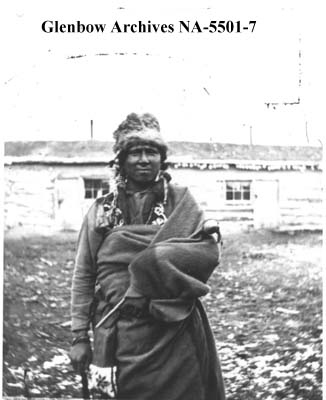
Wa-to-ga-la or Wild Elk, supposedly a nephew of Sitting Bull, but note the fine floral beadwork on his pouch and on his waistcoat. However, Wathogla does translate to wild or unbroken, so who knows...?
And that's it. Hook and/or Anderton took many photos during this period, some of which have been misidentified, possibly deliberately for sales purposes. For instance, there's a photo of White Bird, the Nez Perce leader, that can't possibly be him (as Charlie pointed out here
amertribes.proboards.com/thread/508/old-photos-nez-perce ), though it's used in Jerome Greene's excellent book on the Nez Perce in Canada (and elsewhwere), because the actual White Bird was close to 40 years older than the subject in the photo.
Anderton is supposed to have taken the first photograph of Sitting Bull (though in the Glenbow archives, it's credited to Hook), but when you look closer, it doesn't look like him and at least some of the men in the background certainly don't appear to be Lakota (and some would appear to be Metis or white):
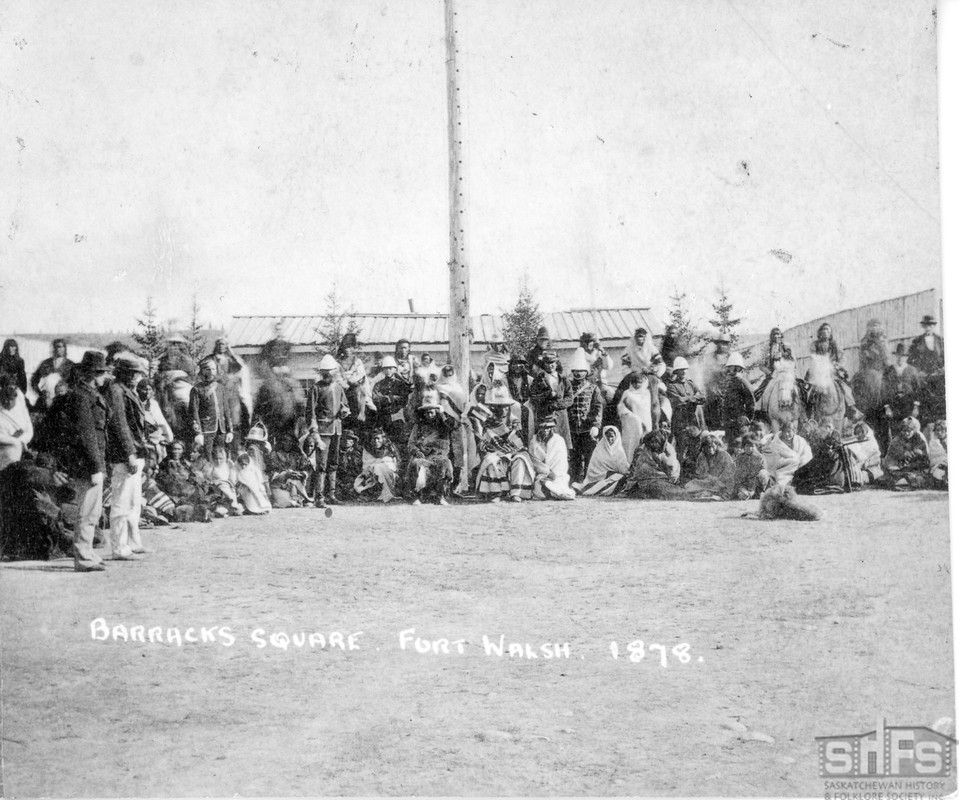
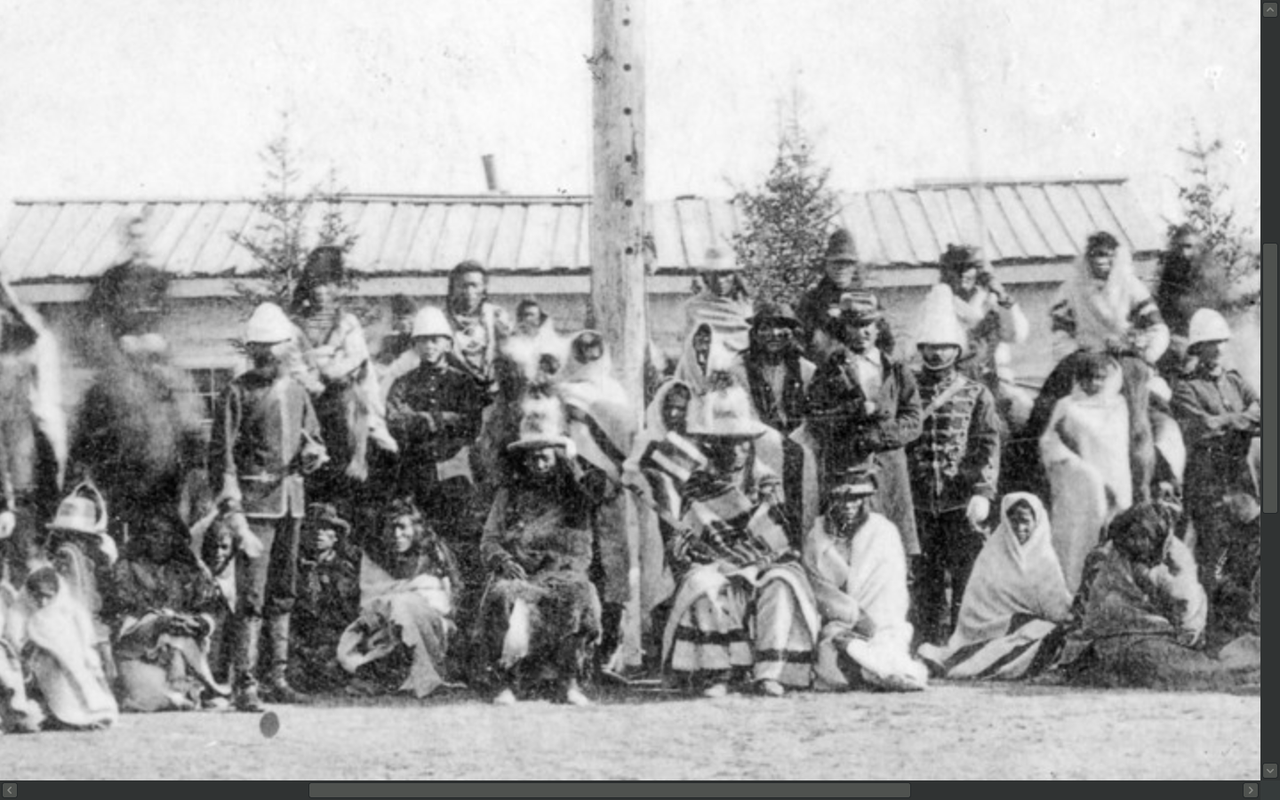
Sitting Bull is supposed to be sitting to the right (our right) of the post. It has been suggested that it is Crowfoot to the left - but you can see it's not. Look at the non-Lakota hairstyle and the buckskin shirt of the mounted man to the left of the pole.

Perhaps Anderton/Hook did take Sitting Bull's photograph, but if so, it has yet to emerge.
The only other image I've seen of 'Indians' in the Fort Walsh parade ground, with the camera placed at pretty much the same sopt it for this photo, is of a group of dancers indentified as Cree - then I came across exactly the same image where they are identified - this time on the image itself - as Assiniboine. Neither image, however, is of the quality of the one above:
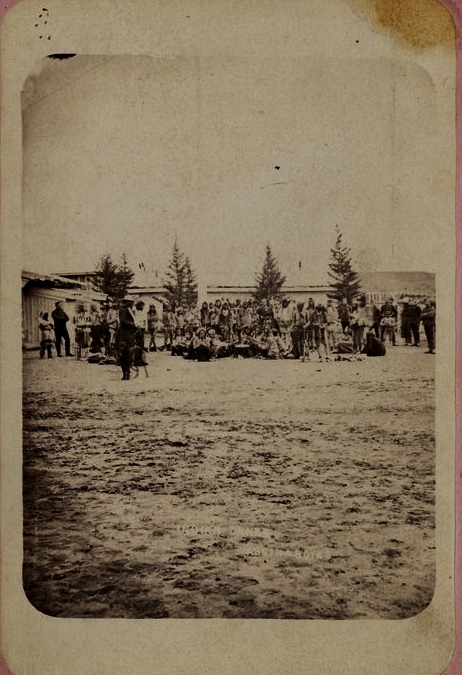
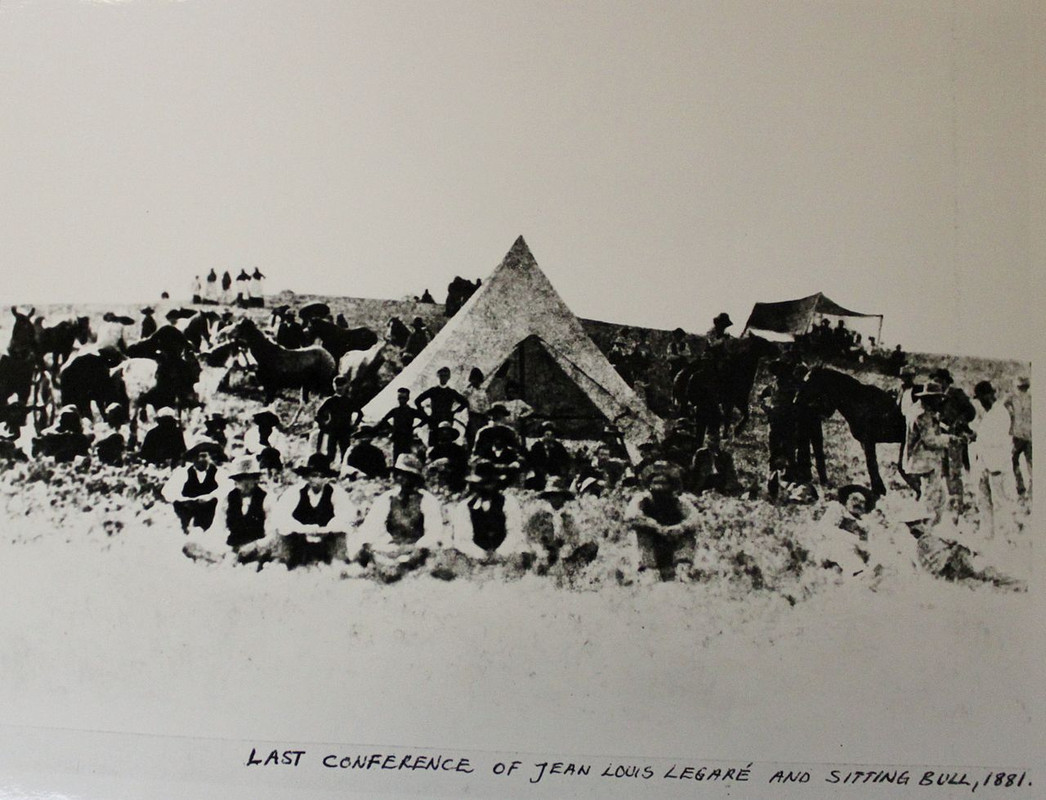
I recall first seeing this image at Fort Walsh; it allegedly shows the last meeting between Jean Louis Légaré and Sitting Bull before the latter crossed back into the United States. I have to admit, I struggle to see any Lakota at all here.
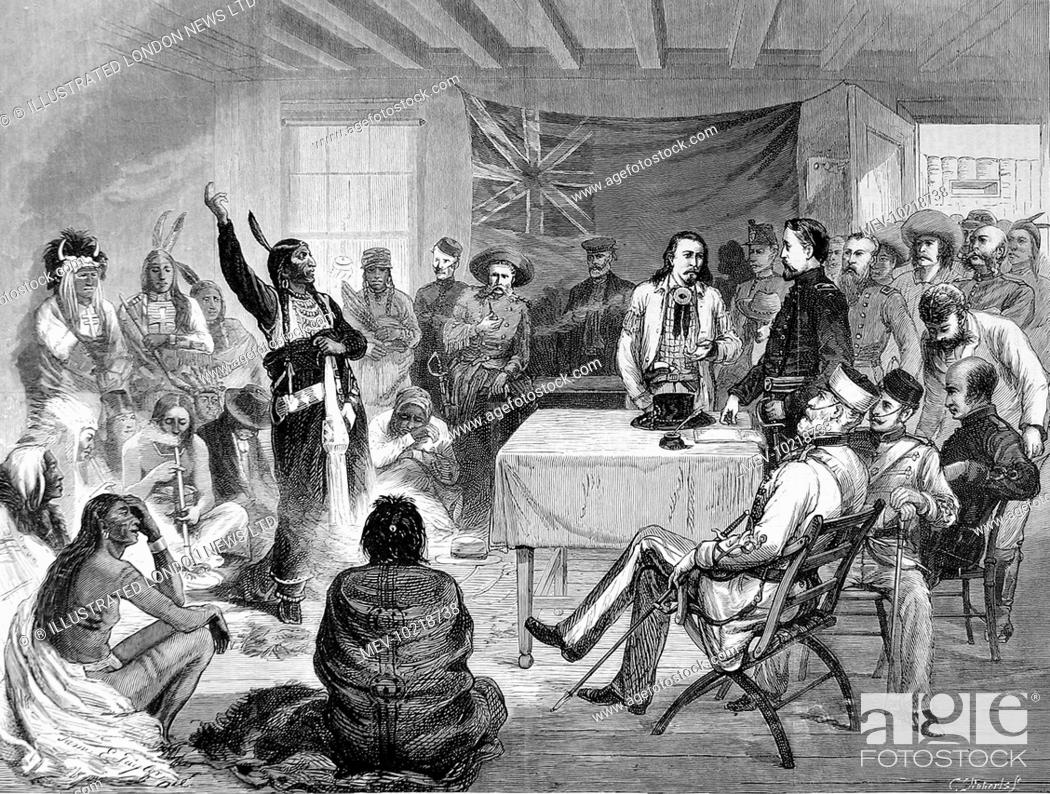
This is Sitting Bull meeting the Terry Commission at Fort Walsh in October 1877. Unfortunately, far from being drawn from life, the artist has taken the images from several photographs, including Gardner's image of Old Man Afraid of his Horses smoking the pipe at the Laramie Peace Conference in 1868 and Charles Bell's photos of the Lakota delegation to Washington the previous month.
New York Herald correspondent Jerome Stillson and Dr. Richard Barrington Nevitt (who had arrived in the west with the NWMP in 1874) are also credited with images of Sitting Bull.
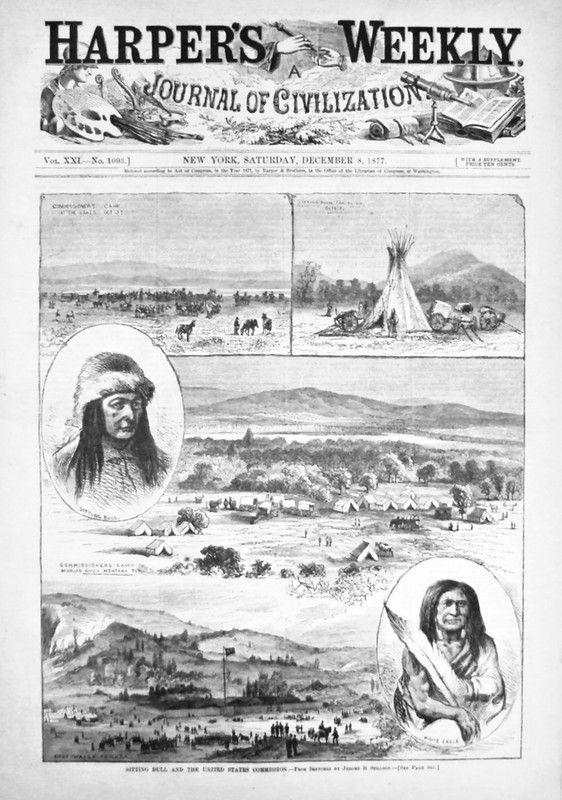

White Eagle, the Dakota (Sisseton or Wahpeton) chief who initially acted as an intermediary between the NWMP and Lakota
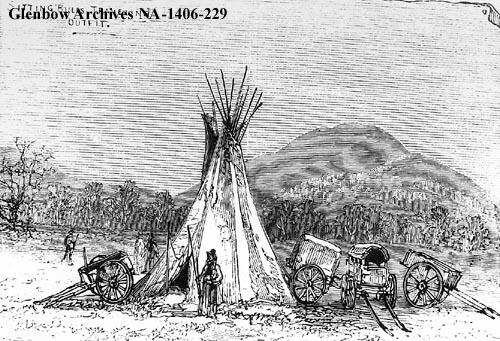
Sitting Bull's travelling outfit
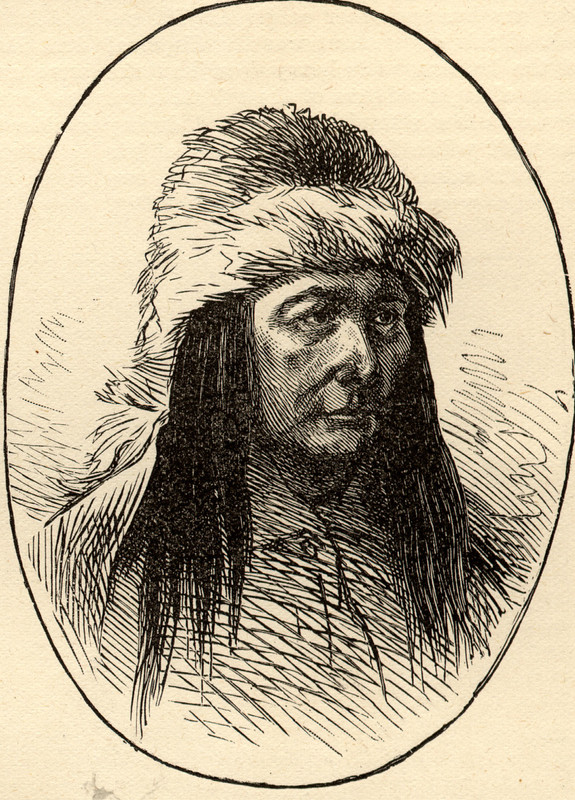
Illustration of Sitting Bull in Canada based on a sketch by Jerome Stillson, October 1877, during the meeting with General Terry's Commission at Fort Walsh. It was used on the cover of the December 8 issue of
Harper's Weekly. The other man is a Dakota leader White Eagle, of either the Wahpeton or Sisseton. However, Gregor Lutz here -
amertribes.proboards.com/thread/2245/black-moon-photograph - quotes a letter from Dr. Nevitt that the image is indeed by Stillson, but that his drawing of "Sitting Bull's travelling outfit" was actually a Metis lodge near Fort Walsh. He also noted that the only part of the Stillson drawing that resembled Sitting Bull was the fur cap.
Stillson's interview:
www.astonisher.com/archives/museum/sitting_bull_little_big_horn.htmlThis is about another interview with Sitting Bull in Canada in 1879 - Stanley Huntley's:
www.jstor.org/stable/4518650
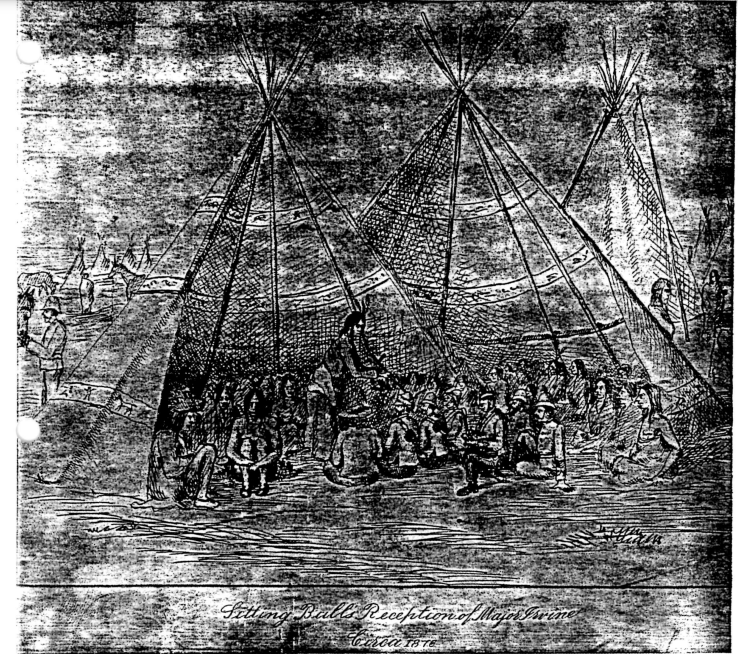
Sitting Bull meets with Lieutenant Colonel Irvine and other NWMP officers. Sorry for the poor quality - this was the best I could find on the net.
Dr. Nevitt is credited with the crude portrait and the illustration showing Sitting Bull speaking to Irvine on June 2nd, 1877. As Gregor points out, Nevitt was recovering from an illness and couldn't be there, so the assumption is that he based the drawing of the council on what he was told; according to Robert Utley in
The Lance and the Shield, that (very) rough portrait was supposed to be on the back of the field sketch for the drawing immediately above; however, the portrait is pretty crude - even for a sketch - by someone of Nevitt's ability.
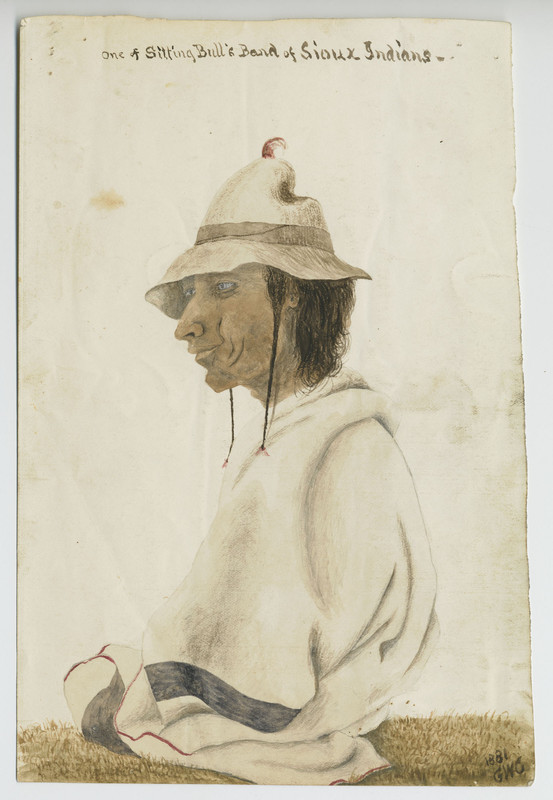
One of Sitting Bull's band of Sioux Indians at Fort Ellice, 1881 by artist GWC
www.watercolourworld.org/painting/portrait-member-sitting-bulls-band-hunkpapa-lakota-original-title-one-sitting-bulls-band-sioux-tww015656It is clear;y labelled, but is he just a 'Sioux' in the broadest term? Was Sioux just synonymous with Sitting Bull for some people? I did wonder if this is meant to be Steps. The mysterious GWC painted a Cree and an Assiniboine at Fort Ellice and neither seem to have a truncated figure like this one - not that it looks anything like Steps facially, of course.
Steps:
amertribes.proboards.com/thread/3397/steps-seeskoomkee-bannock-shoshone-perce?page=1&scrollTo=27452